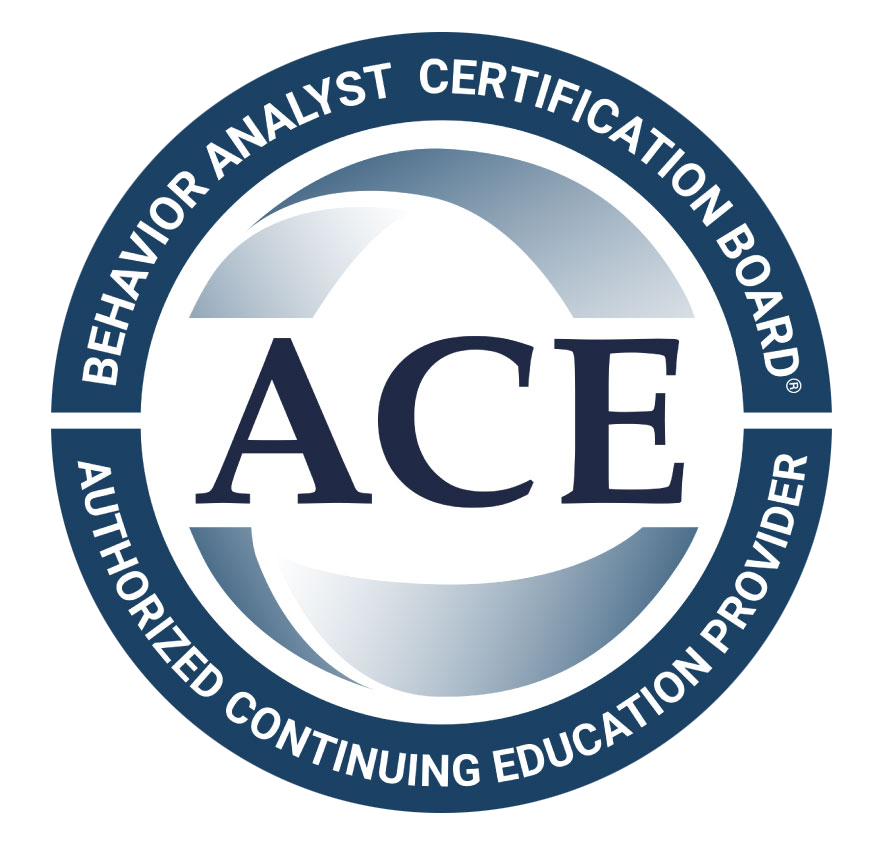The Framework for School-Based ABA Therapy
Understanding Positive Behavioral Interventions
Positive Behavioral Interventions and Supports (PBIS) are an evidence-based, tiered framework aimed at supporting students' behavioral, academic, social, and emotional well-being within educational settings. This system is effective in K-12 schools, early childhood programs, treatment programs, and juvenile justice programs. When implemented with fidelity, PBIS encompasses five key elements:
- Systems
- Data
- Practices
- Outcomes
- Equity
These elements collectively contribute to the effective application of PBIS, leading to improved social competence, academic success, and an enhanced school climate.
| Framework Element | Description |
|---|---|
| Systems | Processes and structures used to implement PBIS. |
| Data | Information used to guide decision making and evaluate outcomes. |
| Practices | Strategies and interventions applied to support students. |
| Outcomes | Behavioral and academic improvements seen in students. |
| Equity | Ensuring fair support for all students to achieve success. |
Importance of School-Wide Support
School-wide support is crucial for the successful implementation of PBIS. The tiered PBIS framework provides three levels of support:
- Tier 1:
Universal, Primary Prevention (All)
- Tier 2:
Targeted, Secondary Prevention (Some)
- Tier 3: Intensive, Individualized, Tertiary Prevention (Few)
Each tier offers varying levels of support tailored to the specific needs of students. Schools implementing PBIS have reported benefits such as:
- Improved behavioral outcomes
- Enhanced social and emotional well-being
- Increased academic success
- Reduction in exclusionary discipline practices
- Better overall school climate
PBIS emphasizes the importance of leadership teams working alongside students, families, and community members. These teams prioritize valued outcomes and promote high expectations for all students. This commitment to systems change benefits not just students, but educators and families alike.
To explore more details about school-based ABA therapy programs and school-based ABA therapy techniques, internal resources are available.
By understanding the framework and the importance of school-wide support, stakeholders can make informed decisions that positively impact the educational and behavioral outcomes for students.
Implementing PBIS in Schools
Positive Behavioral Interventions and Supports (PBIS) is an evidence-based framework designed to enhance the school-based behavior intervention landscape. Understanding the elements of effective implementation and the tiered support system is crucial for schools aiming to foster positive behavioral outcomes and academic success.
Elements of Effective Implementation
Implementing PBIS effectively requires a comprehensive understanding of its core elements, which ensure scalable and sustainable practices. These five inter-related components include:
Systems
- Establishing a structure within the school that supports staff in their implementation of PBIS strategies.
- Ensuring that leadership teams are in place to provide direction and guidance.
Data
- Utilizing data to guide decision-making processes for improving student outcomes.
- Monitoring the effectiveness of interventions through regular data collection and analysis.
Practices
- Implementing evidence-based interventions and strategies to support positive behavior.
- Tailoring these practices to fit the needs of the school population.
Outcomes
- Prioritizing valued outcomes, such as reduced behavioral issues and improved academic performance.
- Setting measurable goals for student behavior and school climate.
Equity
- Ensuring that PBIS practices promote fairness and inclusivity for all students.
- Disaggregating data by student groups to identify and address disparities.
Focusing on these elements enables schools to create a holistic approach to PBIS that benefits students' behavioral and academic growth.
Tiered Support System
The tiered support system within PBIS is designed to provide varying levels of intervention based on the needs of students. This structure ensures that all students receive the support necessary for their success.
Tier 1: Universal, Primary Prevention (All)
- Aimed at all students and involves the implementation of school-wide expectations and practices.
- Focuses on preventing behavioral issues through proactive measures and consistent reinforcement of positive behaviors.
Tier 2: Targeted, Secondary Prevention (Some)
- Provides additional support for students who are at risk for behavioral and academic challenges.
- Involves targeted interventions such as small group instruction and specialized support programs.
Tier 3: Intensive, Individualized, Tertiary Prevention (Few)
- Offers intensive and individualized support for students with significant behavioral needs.
- Includes personalized interventions based on thorough assessments and collaboration with specialists.
By implementing this tiered support system, schools can ensure that students receive the level of intervention appropriate to their needs, promoting better behavioral, social, emotional, and academic outcomes.
For more information on PBIS and its successful implementation, visit our article on school ABA therapy services.
School-based Behavioral Strategies
Implementing effective behavioral strategies in schools is essential for fostering a positive learning environment and promoting academic success, particularly for students with Autism Spectrum Disorder (ASD). Below are several strategies integral to school-based behavior intervention programs.
Check-in/Check-out System
The Check-in/Check-out (CICO) system ranks as the most commonly used behavioral strategy in schools as of 2020. This strategy involves students having brief, scheduled meetings with a teacher or mentor at the beginning and end of each day to discuss behavioral expectations and their performance. The system offers individualized support, and research has shown significant improvements in classroom behaviors for students who utilize this intervention.
| Item | Description |
|---|---|
| Frequency | Daily check-ins and check-outs |
| Participants | Students, Teacher/Mentor |
| Outcomes | Improvement in classroom behavior |
PBIS Reward System: Token Economy
The
Positive Behavioral Interventions and Supports (PBIS) Reward System, also known as a Token Economy, is another widely used strategy. This system rewards students for exhibiting desired behaviors using tokens that can be exchanged for privileges or rewards. This strategy is flexible as it allows educators to tailor the types of reinforcement (verbal praise, privileges, etc.) to match individual student preferences.
| Item | Description |
|---|---|
| Components | Tokens, Rewards, Reinforcement |
| Participants | Students, Educators |
| Outcomes | Encourages desired behaviors |
Self-Monitoring Tracking System
A self-monitoring tracking system is frequently used with older students to help them identify and evaluate behaviors they aim to change or improve. This self-regulation strategy promotes not only specific behavior changes but also enhances broader social-emotional skills like self-awareness and responsible decision-making.
| Item | Description |
|---|---|
| Components | Self-monitoring tools, Goal-setting |
| Participants | Students |
| Outcomes | Improved self-awareness, responsible decision-making |
Structured Routines
Structured routines provide predictability and a sense of security, which is particularly beneficial for students who struggle with frustration, anxiety, or completing assignments. By establishing a consistent schedule, students are more likely to stay engaged and focused, particularly in remote learning environments.
| Item | Description |
|---|---|
| Components | Schedules, Predictability |
| Participants | Students, Educators |
| Outcomes | Enhanced engagement, reduced anxiety |
Praise and Positive Reinforcement
Praise and positive reinforcement, when applied intentionally and specifically, can significantly enhance student motivation and behavior. Educators are recommended to use a positive-to-corrective feedback ratio of 5:1 to effectively acknowledge and reward positive behaviors. This not only boosts self-esteem but also encourages continuous positive actions.
| Item | Description |
|---|---|
| Components | Verbal praise, Positive reinforcement |
| Participants | Students, Educators |
| Outcomes | Increased motivation, improved behavior |
These strategies are crucial elements of school-based ABA therapy techniques and are essential for creating supportive and effective learning environments for students with ASD.
For more detailed insights into implementing these strategies, explore ABA therapy in schools.
Success Indicators in EIBI Programs
The effectiveness of Early Intensive Behavioral Intervention (EIBI) programs is measured by specific success indicators which help determine the progress and outcomes achieved by children with Autism Spectrum Disorder (ASD). These programs are vital parts of school-based behavior intervention strategies aiming to foster development in various skill domains.
Early Intensive Behavioral Intervention (EIBI)
Early Intensive Behavioral Intervention (EIBI) programs are tailored to support children diagnosed with autism between the ages of two and five. These programs are designed to address behavioral challenges and facilitate the acquisition of critical skills in areas like communication, social interaction, and daily living. EIBI programs focus on early intervention to maximize developmental outcomes. Interventions are applied consistently across different settings to ensure skill generalization.
Progress Monitoring in EIBI
Progress monitoring in EIBI involves regularly assessing the advancement of children in targeted skills. This includes evaluating improvements in language and communication abilities, adaptive behaviors, social interactions, and reductions in challenging behaviors.
| Skill Area | Progress Indicators | Measurement Methods |
|---|---|---|
| Communication | Increased use of words, improved expressive and receptive language skills | Language assessments, parent/teacher reports |
| Adaptive Behaviors | Enhanced daily living skills, improved self-care routines | Observational checklists, skills assessments |
| Social Interactions | Better peer engagement, increased play skills | Social skills inventories, peer interaction observations |
| Behavioral Reduction | Decrease in tantrums, self-injurious behaviors, aggression | Behavior tracking logs, incident reports |
Regular progress monitoring not only measures success but also helps tailor interventions to the child’s evolving needs, ensuring the most effective and individualized support.
Skill Domains Addressed
EIBI programs focus on developing various skill domains essential for a child’s growth and future independence. These domains include:
- Communication: Enhancements in both expressive and receptive language, fostering better interactions and comprehension.
- Social Interaction:
Development of appropriate peer interactions, play skills, and the ability to read social cues.
- Daily Living Skills: Promotion of self-care and independence in routines such as dressing, eating, and personal hygiene.
- Behavioral Regulation:
Addressing tendencies such as tantrums, self-injury, and aggression to improve overall behavior.
- Academic Skills: Building foundational skills necessary for academic success.
- Independence and Self-Advocacy: Encouraging children to be more self-reliant and to advocate for their needs.
| Skill Domain | Key Focus Areas | Expected Outcomes |
|---|---|---|
| Communication | Expressive/Receptive Language | Improved verbal/nonverbal communication |
| Social Interaction | Peer Engagement | Enhanced social skills, better friendships |
| Daily Living Skills | Self-Care, Routines | Increased independence |
| Behavioral Regulation | Tantrum Reduction | Calmer behavior, less aggression |
| Academic Skills | Foundational Learning | Academic readiness |
| Independence | Self-Advocacy | Self-reliance |
These focused efforts collectively contribute to the betterment of children’s quality of life, providing comprehensive support to families and educators.
Impact of EIBI Programs
Early Intensive Behavioral Intervention (EIBI) programs utilize Applied Behavior Analysis (ABA) techniques to support children with Autism Spectrum Disorder (ASD) in various skill domains. They focus on enhancing communication skills, reducing challenging behaviors, and involving family in the intervention process to ensure a holistic approach to development. Here, we'll discuss the profound impacts of EIBI programs in these key areas.
Improvements in Communication Skills
EIBI programs emphasize progression in targeted skills such as language and communication. This focus on communication helps children with ASD to better express their needs, socialize with peers, and engage in meaningful interactions.
| Communication Skills Domain | Improvement Indicators |
|---|---|
| Verbal Communication | Increased vocabulary, sentence structuring |
| Non-Verbal Communication | Improved use of gestures, facial expressions |
| Receptive Language | Better understanding of instructions, questions |
| Expressive Language | Enhanced ability to express needs, emotions |
Reduction of Challenging Behaviors
One of the significant benefits of EIBI programs is the reduction of challenging behaviors. Through systematic data collection and individualized interventions, challenging behaviors such as aggression, meltdowns, and self-injury are significantly reduced. This not only benefits the child but also enhances the learning environment.
Family Involvement in EIBI
Family involvement is essential for the success of EIBI programs. Families are considered key partners in the intervention process, participating in meetings, workshops, and training sessions. This collaboration equips family members with the skills and knowledge needed to support their child's development effectively.
| Family Involvement Activity | Description |
|---|---|
| Training Workshops | Educates families on ABA techniques and strategies |
| Regular Meetings | Provides updates on child's progress |
| Collaborative Goal Setting | Involves families in creating and adjusting intervention goals |
| Support Groups | Offers networking and emotional support for families |
Incorporating family involvement in the intervention process creates a supportive environment that fosters long-term success.
Supporting Children with ASD
Supporting children with Autism Spectrum Disorder (ASD) in a school setting often involves a collaborative effort among educators, ABA therapists, and families. Employing a family-centered approach, fostering collaborative partnerships, and empowering families are essential to the success of school-based behavior intervention.
Family-Centered Approach
A family-centered approach recognizes the vital role families play in the development and education of children with ASD. Effective Early Intensive Behavioral Intervention (EIBI) programs prioritize family involvement as an essential component. Engaging families in the intervention process through regular meetings, workshops, and training sessions equips parents and caregivers with the knowledge and skills necessary to support their child's development.
| Key Aspects of Family-Centered Approach | Benefits |
|---|---|
| Parental Training | Enhances intervention effectiveness |
| Regular Communication | Ensures consistency between home and school |
| Support Groups | Provides emotional and practical support |
Collaborating with families helps to create a cohesive and supportive environment, which significantly impacts the child's progress and adaptability both at home and school.
Collaborative Partnerships
Creating a successful school-based ABA therapy program involves the establishment of strong collaborative partnerships among all stakeholders—educators, therapists, and family members. Such partnerships are essential for developing and implementing individualized intervention plans tailored to each child's unique needs.
Regular team meetings allow for the sharing of observations, data, and strategies, ensuring that all team members are aligned with the intervention goals. Collaborative partnerships enhance the overall quality of the intervention, fostering an inclusive and supportive school atmosphere where each child can thrive.
Empowering Families
Empowering families is an integral aspect of successful school-based ABA therapy services. By providing parents with resources, training, and support, families are more confident and capable in their ability to contribute positively to their child's progression.
Techniques to empower families include:
- Educational Workshops: Training sessions on ABA principles and techniques.
- Resource Sharing: Providing access to materials and tools that support at-home interventions.
- Support Networks: Facilitating connections with other families facing similar challenges.
Empowered families are better equipped to reinforce positive behaviors, manage challenging behaviors, and contribute to the skill development of their children. This collaborative effort ultimately leads to improved outcomes in communication, social interaction, and adaptive behaviors.
SOURCES:
https://www.pbis.org/pbis/what-is-pbis
https://www.panoramaed.com/blog/5-behavior-management-strategies
https://www.branchingminds.com/blog/top-used-behavioral-strategies-and-how-to-implement-them-effectively
https://effectiveschoolsolutions.com/school-behavior-intervention-strategies/
https://pmc.ncbi.nlm.nih.gov/articles/PMC3483890/
https://theresponsivecounselor.com/2021/09/behavior-interventions-for-elementary-students.html









